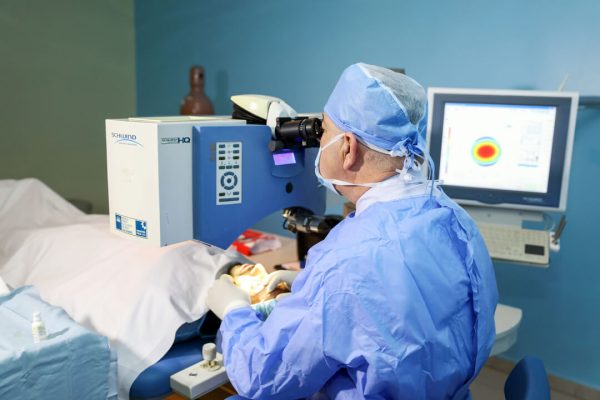Absorption spectroscopy, such as the Agilent Technologies Advanced Absorption Systems (AAS), is used to determine the elemental composition of a material. This blog will focus based on absorption spectroscopy, the history of absorption spectroscopy, and the typical uses of absorption spectroscopy.
What is Absorption Spectroscopy?
The analysis spectroscopic method known as absorption spectroscopy measures the quantity of light or wavelength which is received by a material. Light absorption spectroscopy uses a light source to measure how a sample dissipates further electrical radiation.
In the chemical analysis and other domains, absorption spectroscopy is commonly used to determine the molecular build of various substances. The quantification of these substances is another use. Absorption spectroscopy may identify specific chemical structural features in a material by studying vibrational frequencies and how infrared light is received, released, and reflected.
Fundamental Components of Absorption Spectroscopy
Ions and atoms are the fundamental building blocks of the absorption spectroscopy method. Atoms are mostly the fundamental component of a chemical compound and the smallest substance unit. Ions have been charged particles that may also be ionized. Light wavelengths are absorbed and emitted by neutral atoms.
Atoms must absorb a specific quantity of energy to be higher in energy levels, which is how it’s absorbing is defined. These structures may thus be developed and applied to determine the chemical elements that make up a mixture.
A spectrometer is an equipment that can detect the differences in the electromagnetic radiations consumed or produced by a material. This may be done by comparing the spectral data of the sample to a reference spectrum. Because the absorbance of a spectrometer is specific to each substance, its application can be beneficial in a wide variety of disciplines.
On the other hand, a spectrophotometer determines the relative strengths of all of these wavelengths. In most cases, it is equipped with a source of light and a monochromator, which together generate a beam whose wavelengths fall within a certain area of the electromagnetic spectrum toward which materials are subjected.
Detectors were also mounted so that an analysis may be performed on the strength of the signals generated and shown to the viewer on a monitor.
The Agilent Absorption Spectroscopy Instruments
Metal concentrations in various samples may be determined using atomic absorption spectrometry (AAS). Low in price and simple operation, Flame AAS is ideal for widespread use. There is an improvement in the detection limits with furnace AAS. You may have the perfect combination with the AA Duo models.
Agilent absorption spectroscopy may be tailored to the requirements of every lab, regardless of cost. You may find an AAS spectrometer to meet your needs among their products, which range from rapid Flame Atomic Absorption devices to very sensitive graphite furnace AAS instruments.
Flame Atomic Absorption Instruments
Fast Sequential atomic absorption spectrometers, such as the Agilent 240FS AA, can significantly increase sample throughput and save operating expenses.
The Agilent 240FS AA system is perfect for use in laboratories dealing with foodstuffs, agriculture, and the environment because it manages many element suites. The 240FS AA is equipped with a programmable gas box and D2 background correction, and intelligent bulb selection.
Features:
- Determine the concentration of all components from a single aspiration, saving you time in your analysis.
- Companies can save time and money by using fewer samples and throwing fewer away during analysis.
- Get precise outcomes by quickly and accurately calculating 10 factors per sample in under 2 minutes.
- Online internal standard adjustments for physical variations, sample preparation mistakes, or drift can improve precision and accuracy.
- Simplify your analysis by removing the guesswork out of the method development with the SpectrAA complete cookbook
- Use the Mark 7 atomization technology to fine-tune your flame AA’s efficiency.
- Sensitivity better than 0.9 Abs from 5 mg/L Cu is commonly achievable with the Mark 7 atomization technology.
It also comes with:
- 280FS AA
- 55B AA
Graphite Furnace Atomic Absorption Instruments
With its graphite furnace, the Agilent 240Z AA spectrometer is one of its most sensitive and reliable instruments. The Zeeman background approach, shown to produce excellent correction accuracy, is used in its design, and the shape is tuned to provide the optimum detection limits.
Four lamp locations on the Agilent 240Z AA make it suitable for regular analysis in food, environmental, and medical applications.
Automatic light selection and an integrated PSD120 autosampler allow the 240Z AA to reliably prepare and send standards and data to the graphite tube. Tools to streamline methodology creation and keep tabs on analyses are provided.
Features:
- The Constant Temperature Zone furnace design achieves excellent results down to the ppb range.
- Sensitivity that is both high and unfettered by noise or other factors
- Analysis of complex matrices may be performed with greater freedom.
- Utilizing the SRM Wizard, method creation may be simplified and automated, leading to optimal analytical circumstances.
- For in-depth investigation within the graphite tube, we use a high-definition Tube-CAM.
- Powerful high-intensity UltrAA lights allow for detection limits down to the ultra-trace level.
- Using just one light source, alignment is quick and simple.
- The accuracy of polynomial interpolation for making corrections is 11 times better than that of linear interpolation, the method used by most competing systems (bracketing)
- Versatility — Verify the AA results from a Zeeman graphite furnace by adding the VGA for the Zeeman adapter and the hydride generation approach.
Also comes with:
- 280Z AA
Flame & Graphite Furnace Duo Instruments
True synchronized functioning of the flame and graphite furnace sets the Agilent AA Duo apart as the only atomic absorption spectrometer in the world. The Agilent AA Duo allows for genuine simultaneous operation, doubling your productivity by allowing you to control two permanently attached atomizers from a single centralized computer.
Features:
- Using a flame and graphite furnace together can work twice as fast.
- Put together a graphite furnace that has been rectified for Zeeman effects using deuterium or a graphite furnace that uses flames or hydride atomizers.
- With dedicated atomizers, you never waste time waiting for anything to heat up or cool down.
- Analyzing virtually any sample is now possible because of the industry’s broadest linear dynamic range, which extends from parts per billion to percentages.
- Each atomizer is perfectly positioned for use right out of the box without ever needing to be readjusted.
- Utilize the world’s quickest flame AAS, made possible by Agilent’s AA Fast Sequential technology.
- Agilent Worksheet Software, which controls the Agilent AA Duo, requires nothing in the way of training since it allows for quick instrument setup, intuitive use, and straightforward method formulation by both amateurs and professionals.
Conclusion
Absorption spectroscopy is a powerful tool for chemical research because of its high level of certainty and its quantitative character. Absorption spectroscopy has several uses due to the specificity with which molecules in a mixture may be identified.





